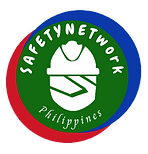The Presidential Proclamation No. 731 series of 1996 declares the 2nd week of February of every year as the “National Awareness Week for the Prevention of Child Sexual Abuse and Exploitation” or also known as the “Child Sexual Abuse Awareness Week”.
DOLE Department Order No. 65-04, section 3-B, defines “child labor” as to any work or economic activity performed by a child that subjects them to any form of exploitation or harmful to his health, physical, mental, or psychosocial development.
According to the 2011 Survey on Children of Philippine Statistics Authority (PSA) published last December 2015, there are 2.1 million child laborers aged groups of 5 to 17 years old. About 95 percent of them are working hazardous works (work in farms and plantations, dangerous mines, on streets, in factories, and in private homes as child domestic workers). Agriculture remains to be the sector where most child laborers can be found at 58 percent.
The Philippine Program Against Child Labor (PPACL) is a program of the Bureau of Workers with Special Concerns under the Department of Labor and Employment (DOLE), works to transform the lives of child laborers, their families, and communities towards their sense of self-worth, empowerment and development. It works towards the prevention and progressive elimination of child labor through protection, withdrawal, healing and reintegration of child workers into a caring society, and supports alleviation of extreme poverty, which has been the main cause of child labor in the country.
In general, hazardous work can have an immediate and long-term impact on the safety and health of workers, including children. This may include injury (e.g., wound from a blade), illness (e.g., respiratory disease by breathing toxic chemicals or dust), disability (e.g., crushed limb from a machine) and even death (e.g., from pesticide poisoning).
It is a right of all workers to have a safe and healthy workplace, thus removing children from hazardous work is imperative. How to do that? Here are some tips from the International Labour Organization:
1. Control the risks identified through a workplace risk assessment - young employees (i.e., those of legal working age) could perform the same tasks in the same workplace if those risks are reduced or removed. 2. Remove children from tasks and environments that are considered dangerous for them but not for adults (e.g. heavy loads, night work, heavy machinery). If possible, transfer them to different tasks and/or to a different location where the work is more suitable for their development. 3. In all situations, make sure children below the minimum working age have access to appropriate education. When possible, children of legal working age should combine their work with formal Technical and Vocational Education and Training (TVET).
The Occupational Safety and Health Center – Regional Extension Unit 6 recognizes the dedicated and hard-working youth for their sacrifices to support their needs and the needs of their families. OSHC REU 6 will continue to conduct information campaigns and dialogues to help ensure the safety and health of the country’s youth workers.


Comments